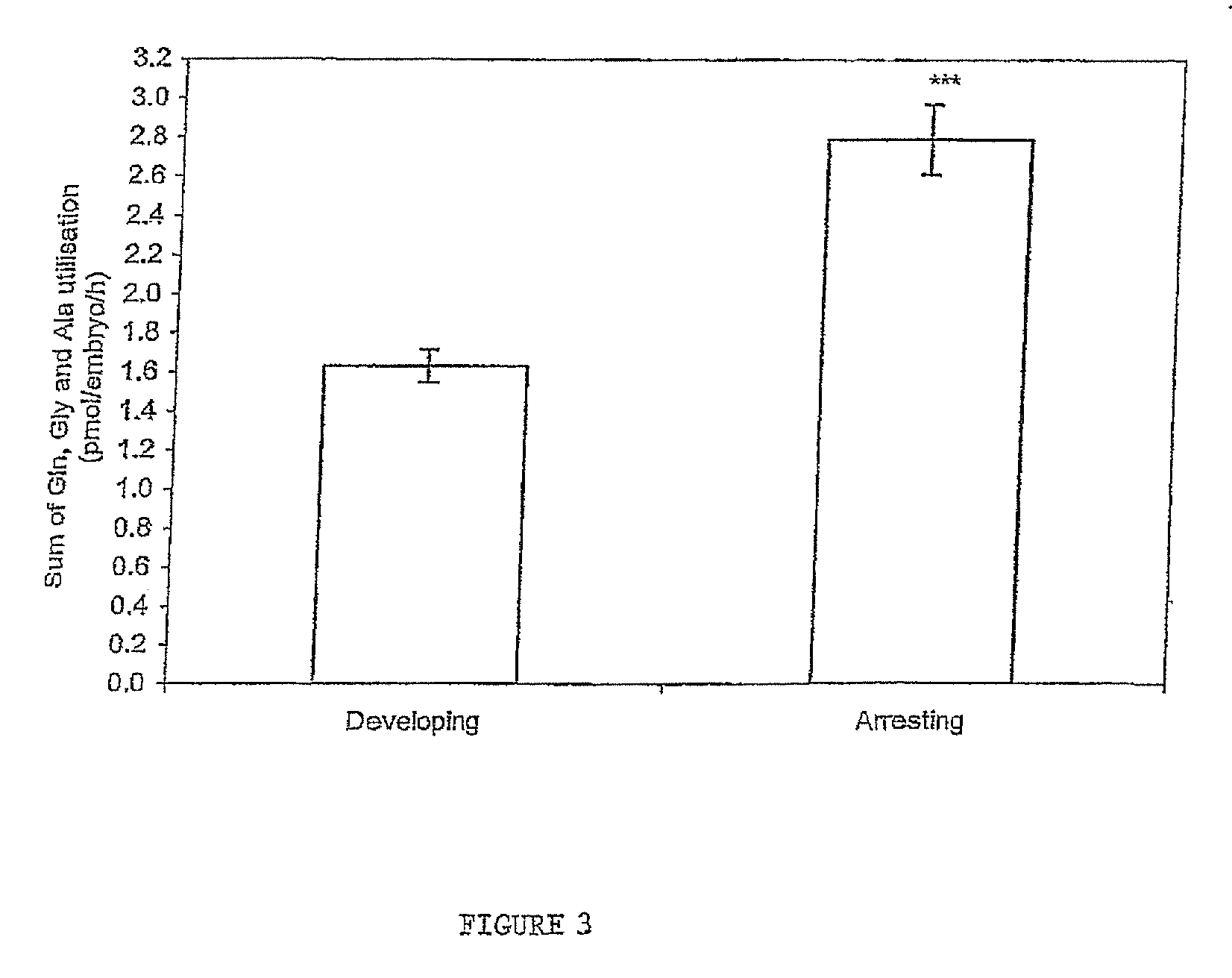Method of assessing the viability of thawed developmentally competent embryos
a technology of viability and thawing, applied in embryonic cells, instruments, enzymology, etc., can solve the problems of increased electrolyte concentration, certain amount of) hardening, spindle apparatus and hence chromosome separation damage, etc., and achieve good model and good model for human
- Summary
- Abstract
- Description
- Claims
- Application Information
AI Technical Summary
Benefits of technology
Problems solved by technology
Method used
Image
Examples
Embodiment Construction
[0039]The invention is described by way of example only and with reference to the accompanying drawings:
[0040]FIG. 1 Amino acid depletion and appearance by frozen thawed human embryos from day 2 to day 3 of development. n=21 for embryos which developed to the blastocyst stage and n=25 for embryos which arrested prior to the blastocyst stage. *P<0.05; **P<0.01; ***P<0.001 significance from zero. Bars with the same superscript are significantly different; a and b, P=0.001; c, P=0.0025; d P=0.016; e, P=0.032; f, P=0.0448.
[0041]FIG. 2 Total amino acid production, depletion, turnover and balance by frozen thawed human embryos from day 2 to day 3 of development. *P<0.05; **P<0.01; ***P<0.001 significantly different from embryos which arrest.
[0042]FIG. 3 Sum of glutamine, glycine and alanine utilisation by frozen thawed human embryos from day 2-day 3 of development. ***P<0.001 significantly different to embryos that develop.
[0043]FIG. 4 Sum of glutamine, glycine and alanine for individual ...
PUM
| Property | Measurement | Unit |
|---|---|---|
| body temperature | aaaaa | aaaaa |
| temperature | aaaaa | aaaaa |
| temperature | aaaaa | aaaaa |
Abstract
Description
Claims
Application Information
 Login to View More
Login to View More - R&D
- Intellectual Property
- Life Sciences
- Materials
- Tech Scout
- Unparalleled Data Quality
- Higher Quality Content
- 60% Fewer Hallucinations
Browse by: Latest US Patents, China's latest patents, Technical Efficacy Thesaurus, Application Domain, Technology Topic, Popular Technical Reports.
© 2025 PatSnap. All rights reserved.Legal|Privacy policy|Modern Slavery Act Transparency Statement|Sitemap|About US| Contact US: help@patsnap.com



